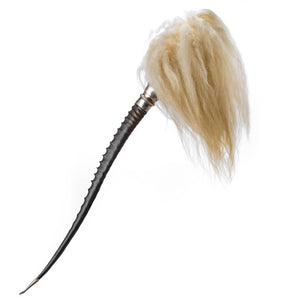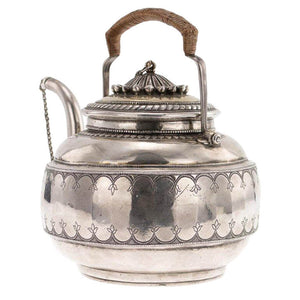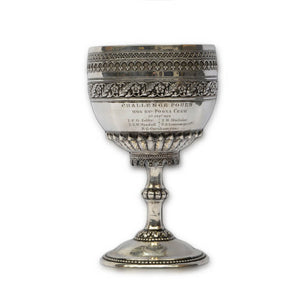The term, Indian Colonial Silver, refers to silver manufactured by European silversmiths working in colonial India and making objects for the benefit of the European settlers living there. Indian Colonial Silver followed the prevalent European style of the day and encompasses a wide range of objects, similar to those which would have been offered in Europe. Occasional specialized objects, curry pans and fly whisks for example, were destined solely for the European ex-patriot community living in India. The silversmith was often assisted by other European employees and also trained Indian workmen.
The Portuguese, French and Dutch all had a foothold in India at some time but the British had the largest presence, eventually ruling the sub-continent from 1858 – 1947. In the early colonial years, silverware was probably not marked and no records of silversmiths exist. Records of silversmiths and objects carrying their marks can be identified and traced from around 1790. Calcutta and Madras were the principal manufacturing centres for colonial silver. The colonial period ended with the commencement of British rule (the Raj period) in 1858. Indian silver made after 1858 is listed under other sections and categorized by region of origin. The principal production centres:- Kutch, Madras, Lucknow and Kashmir have their own categories and the Indian Regional Silver category contains pieces from other regions.
The Portuguese, French and Dutch all had a foothold in India at some time but the British had the largest presence, eventually ruling the sub-continent from 1858 – 1947. In the early colonial years, silverware was probably not marked and no records of silversmiths exist. Records of silversmiths and objects carrying their marks can be identified and traced from around 1790. Calcutta and Madras were the principal manufacturing centres for colonial silver. The colonial period ended with the commencement of British rule (the Raj period) in 1858. Indian silver made after 1858 is listed under other sections and categorized by region of origin. The principal production centres:- Kutch, Madras, Lucknow and Kashmir have their own categories and the Indian Regional Silver category contains pieces from other regions.


